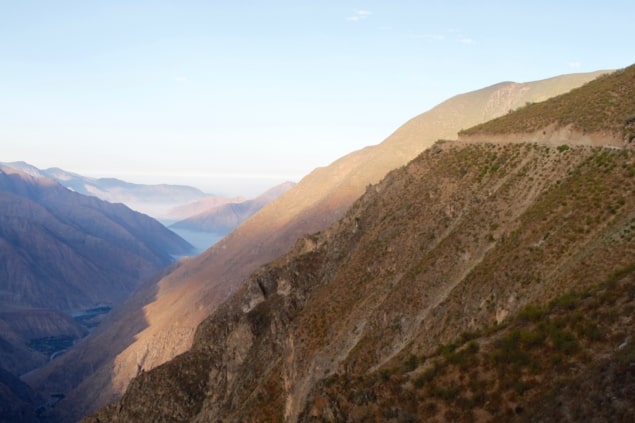
There’s plenty to learn in modern Peru from the designers of ancient water-saving methods, scientists are finding. Our forebears could even keep the capital’s taps running through the summer heat.
Lima, Peru’s desert capital, a city of 12 million people, expects to run out of water by 2025. It already faces a crisis each summer as the supply from the mountains dwindles to a trickle. Yet the quantity of rain in the wet season can be overwhelming.
Between the Andes and the Pacific ocean, Lima sits on a coastal plain where the average rainfall is a tiny 9 mm a year, and it has to rely on the snow melt from the mountains and glaciers to provide summer drinking water and the needs of industry and farming.
But with the glaciers disappearing because of climate change, and the population increasing, the city will soon become untenable for many of the poor in summer, unless water supplies can be improved.
A group of scientists has found that reviving systems developed 1,400 years ago by local people before the Inca empire existed could harvest water from the winter rainy season in the mountains to ensure Lima’s summer supplies.
Researchers from Imperial College London and their colleagues at the Regional Initiative for Hydrological Monitoring of Andean Ecosystems studied a water system in Huamantanga, in the central Andes, one of the last of its kind.
The local people still use a method developed in 600 AD by Peruvian civilisations that created systems in the mountains to divert excess rainwater from source streams through ponds and canals onto mountain slopes and down through fissures in the rocks.
The water would take weeks or even months to trickle through the system and resurface downstream – just in time for the dry season.
The researchers used dye tracers and hydrological monitoring to study the system from the wet to dry seasons of 2014–2015 and 2015–2016. Social scientists involved also worked with Huamantanga’s local people to understand the practice and help map the landscape.
Big increase
They found the water took between two weeks and eight months to re-emerge, with an average time of 45 days. From these timescales, they calculated that, if governments upscale the systems to cater for today’s population size, they could reroute and delay 35% of wet season water, equivalent to 99 million cubic metres per year of water flowing through Lima’s natural terrain.
This could increase the water available in the dry season by up to 33% in the early months, and an average of 7.5% for the rest of the summer.
The method could essentially extend the wet season, providing more drinking water and longer crop-growing periods for local farmers.
The study, published in the journal Nature Sustainability, is the first to examine the pre-Inca system in this much detail to find answers to modern problems. The authors say their research shows how indigenous systems could complement modern engineering solutions for water security in coastal Peru.
Lead author Dr Boris Ochoa-Tocachi, from Imperial’s Department of Civil and Environmental Engineering, said: “With the advent of modern science, you’d be forgiven for wondering how ancient methods could apply to modern-day problems. However, it turns out that we have lots to learn from our ancestors’ creative problem-solving skills.”
Growing too fast
Senior author Dr Wouter Buytaert, from the same department, said: “Like many tropical cities, Lima’s population is growing fast – too fast for water reserves to keep up during dry seasons. Upscaling existing pre-Inca systems could help relieve Peru’s wet months of water and quench its dry ones.”
The seasonal variability typical of coastal Peru is worsened by human impacts. Apart from glacier melting caused by global warming, humans also contribute to erosion, which renders soil too weak to support dams big enough to hold all the water needed in the summer.
Climate change also makes wet seasons wetter, and dry seasons drier − making the need for effective water storage in Peru even more urgent.
The authors say combining pre-Inca systems with classic structures, such as smaller dams, could also help to improve adaptability and water supply in an unpredictable climate.
- This article first appeared at Climate News Network



